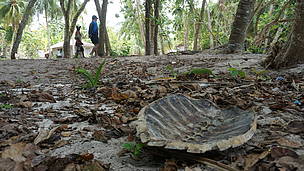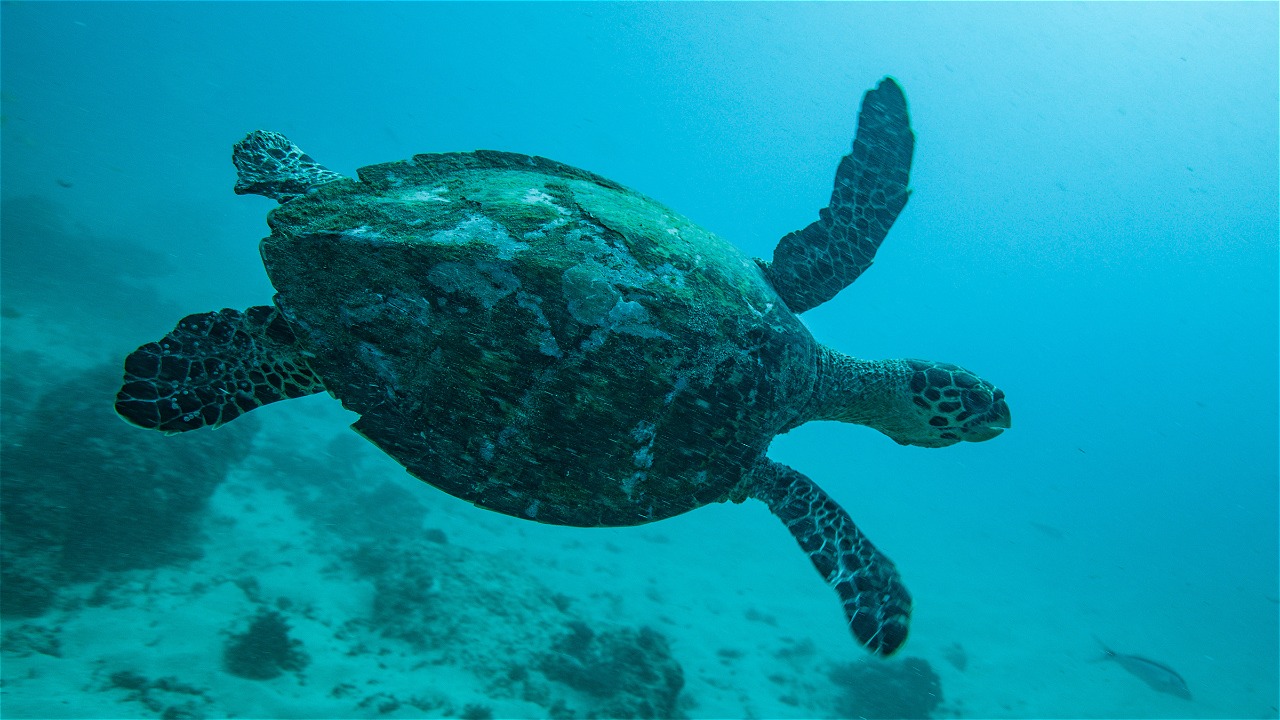NO MAN'S SHELL
By: Siti Yasmina Enita (Communication Officer Inner Banda Arc Subseascape)
Entering the third day of data collection, I and the other seagrass teams joined team A heading to the Wab Ngufar site. Before team A dived, the boat docked to the shore to drop off the seagrass team on the beach. We also approached the people who were doing activities on the beach to introduce ourselves and find information about seagrasses around the beach.
"I think there are seagrasses, around there..." a woman we approached pointed to a choppy area and a tide of about 2-3 meters. Finally, we decided to go around and talk to the local people. The woman welcomed two small boats that pulled up on the beach, and we also said hello.
The two fishermen had just finished fishing near the shore. I took some snapshots of the fishermen's catch, showing the genus pterocaseio, carangoides and a small barracuda in the boat. After a short chat, the mother and the two fishermen transferred the fish they had caught into a small basket and left.
"Did you see a turtle shell?" asked Mas Iqbal. "Turtle? Where?" I asked, because I didn't think I saw a turtle from the beginning until now. "In that area, but only the shell," replied Iqbal. Out of curiosity, we returned to the starting point when we got off the boat and sure enough there was a shell visible from a distance.
We tried to approach it to see more details, the stench began to smell. Yes, the turtle had rotted. In fact, there was no shape of its body anymore, all that was left was the shell, the foul odor and the maggots that were unraveling around it. Judging from the shell, the turtle belonged to the hawksbill turtle species (Eretmochelys imbricate). During my two days of diving, I had already seen two turtles around the reef. The current turtle doesn't count.

From a distance, a man approached us. We introduced ourselves, and he was also a fisherman at Wab Ngufar. He saw that I was still trying to observe the turtle shells. He also told me about the story of a family who died at the same time allegedly poisoned after consuming turtle meat.
"No one has ever deliberately caught a turtle. The turtle itself is trapped in the net, if that's the case, it's just caught. In the past, there were still many who consumed turtle meat, but after the incident, no one dared to eat turtle meat anymore. So if it is accidentally caught and already dead, it is left on the beach to rot," said the fisherman, showing another shell. The people of Wab Ngufar do not sell the decaying sea turtle shells. The shells are left on the beach until they are buried in the sand.
The hawksbill turtle is considered critically endangered (CR) by the International Union for Conservation of Nature and Natural Resources (IUCN). Although sea turtles are not the target catch of the Wab Ngufar community, the number of turtles caught accidentally must be minimized. One of them can be by using environmentally friendly nets that use Green LEDs.





